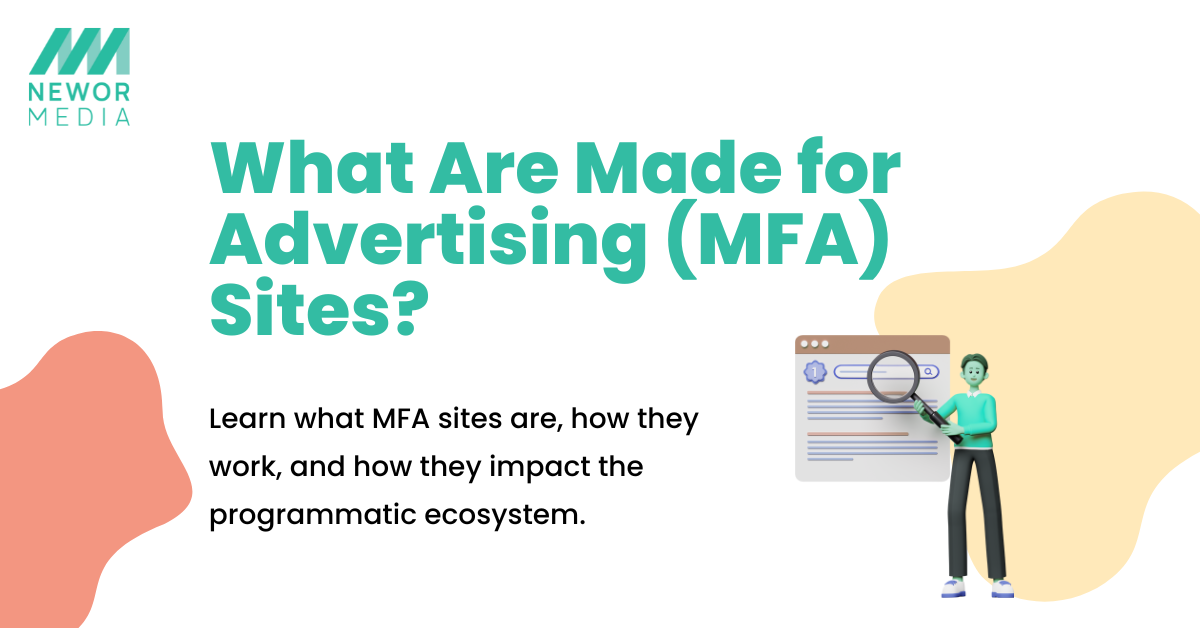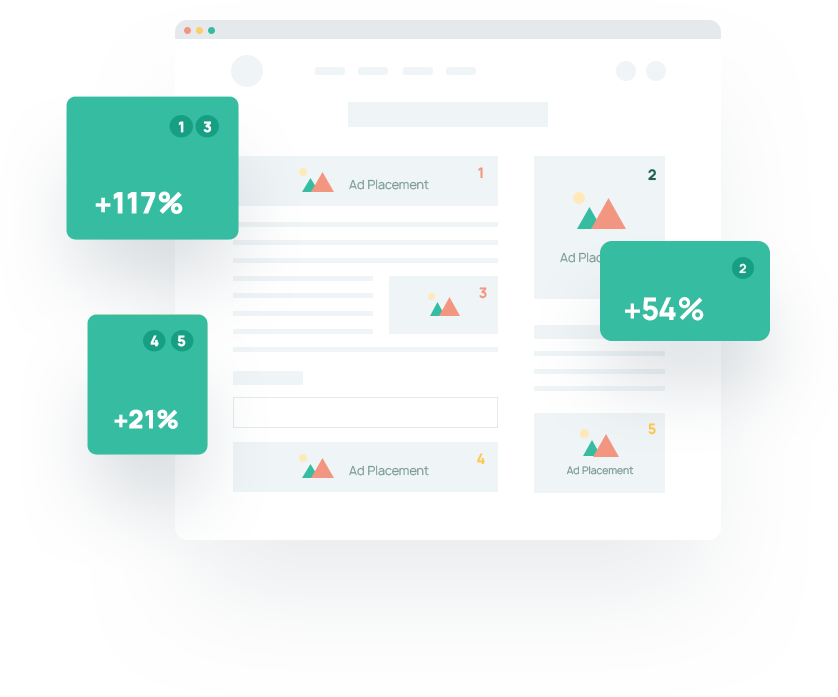In the world of programmatic advertising, not all traffic is the same and neither are all the websites. One term that you might be familiar with is “MFA sites” or “Made for Advertising” websites. These are websites that exist almost to just serve ads, and these are not built to offer meaningful content or user experience.
If you take a look, these websites might look like regular content sites. But once you dig in, the primary intent is clear: maximize ad impressions at all costs.
So why are these websites controversial? And what do they mean for advertisers, publishers, and the overall ad ecosystem?
Let’s break it down.
What Are MFA Sites Exactly?
MFA stands for Made for Advertising, a label that applies to websites that are designed primarily to generate ad revenue. That’s their main purpose. Any content you see is usually thin, low-value, or even repurposed from other sources.
Here’s how to spot a typical MFA website:
- The pages are loaded with display ads, above the fold, between paragraphs, and sometimes even covering the content.
- The content is often clickbait-style, designed to drive traffic from social media or content discovery platforms.
- The user experience is usually poor, with slow load times, intrusive layouts, and little reason to stay.
At first glance, these sites might seem like part of the open web—another content-rich environment. But they operate on a completely different incentive model.
MFA Sites vs. Quality Content Sites
Let’s be clear: running ads on a website doesn’t make it an MFA site. Many high-quality publishers rely on advertising to support their journalism, editorial staff, or niche expertise.
The difference lies in intent and execution.
| Feature | MFA Site | Quality Content Site |
| Purpose | Drive ad revenue | Inform, educate, or entertain |
| Content | Low-effort, sometimes AI-generated | Original, researched, editorially sound |
| Ad Density | High (sometimes overwhelming) | Balanced and user-focused |
| User Experience | Poor; designed to increase clicks | Strong; designed to engage |
| Traffic Sources | Paid arbitrage, clickbait headlines | Organic search, direct visits, email, or social |
MFA sites are not inherently fraudulent, but they walk a fine line. They meet the technical requirements of ad networks, but they don’t serve long-term user value.
Why Are MFA Sites on the Rise?
There are a few key reasons:
Low Barrier to Entry
You don’t need a journalism background or editorial team to spin up a made-for-advertising site. With free content generators, templates, and automated ad tech, it’s easy to set up and scale.
Cheap Traffic Arbitrage
Many MFA sites rely on traffic from Taboola, Outbrain, Facebook, or Google Ads. They buy low-cost traffic, push visitors through multiple ad-filled pages, and monetize via high CPM formats like video or sticky ads.
Programmatic Doesn’t Always Discriminate
Despite advancements, some ad buyers still don’t have full visibility into where their ads run. Unless they’re working with transparent SSPs or using inclusion lists, MFA sites can slip through.
How MFA Sites Affect Advertisers
For advertisers, MFA sites can lead to wasted spend. Even if the metrics look good at the surface level (like impressions or viewability), the real performance, conversions, engagement, or brand lift—often falls flat.
Here’s why:
- Users visiting MFA sites usually bounce quickly.
- Content isn’t aligned with the user’s intent or interest.
- The site may inflate ad impressions through high refresh rates or scroll traps.
As a result, ad dollars get funneled into inventory that looks legitimate on paper but doesn’t deliver real value.
What This Means for Publishers
If you’re a legit content publisher, MFA sites can be frustrating. They dilute inventory quality in the programmatic ecosystem, skew benchmarks, and compete unfairly in auctions due to low overhead.
In some cases, advertisers might start pulling back from open programmatic entirely and go for direct deals or curated marketplaces—which leaves fewer opportunities for mid-sized publishers trying to grow.
That’s why many SSPs and ad partners are starting to crack down on MFA inventory—either by refining definitions, flagging domains, or using more robust site classification tools.
How Platforms Are Responding
Several major ad platforms have started taking action:
- Google Ads has policies around thin content and has begun delisting MFA-style sites from ad-serving eligibility.
- DSPs and SSPs are investing in site quality filters to screen out low-value inventory.
- Industry groups are pushing for better definitions and more transparency around MFA labeling.
But definitions are still fuzzy. Not all MFA sites are fraudulent or malicious—they just exploit the mechanics of programmatic advertising in a way that’s not sustainable long-term.
Is There a Gray Area?
Absolutely. Some websites may blur the line. For example, a niche blog with mediocre content but high ad density is that MFA? What if it has a loyal reader base?
Context matters. That’s why blanket bans don’t always work, and nuanced assessment is critical.
Instead of relying on automated rules, advertisers and SSPs need to combine data points—like bounce rates, time on site, engagement depth, and traffic sources—to decide what’s truly valuable.
What Publishers Should Know
If you’re building a site with ads as your primary monetization model, that’s not a red flag in itself. But keep the following in mind:
- Focus on original, useful content that actually helps or informs readers.
- Maintain a sensible ad layout. Don’t overwhelm your users.
- Optimize for performance and readability, not just ad revenue.
- Build a diverse traffic strategy—don’t rely solely on arbitrage.
Staying out of the MFA label isn’t just about compliance—it’s about creating a site that builds long-term trust and revenue.
Final Thoughts
Made-for-advertising websites are a growing challenge in the programmatic space. While not all MFA sites are outright fraud, many dilute the value of the open web and make life harder for both advertisers and legitimate publishers.
The good news? Awareness is growing. Platforms are refining their detection systems. And publishers who focus on quality, transparency, and user value will continue to stand out.
At Newor Media, we work with real publishers—people who care about their audience, optimize ethically, and build content that matters. Whether you’re monetizing a niche blog or scaling a growing media brand, we’re here to help you do it the right way.
Want to stay above board and maximize revenue without getting caught in the MFA mix?
Get in touch with us to learn how we help publishers grow responsibly.

